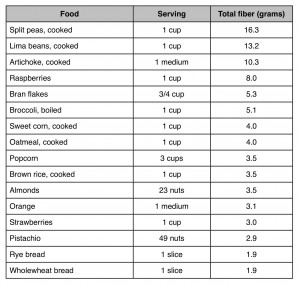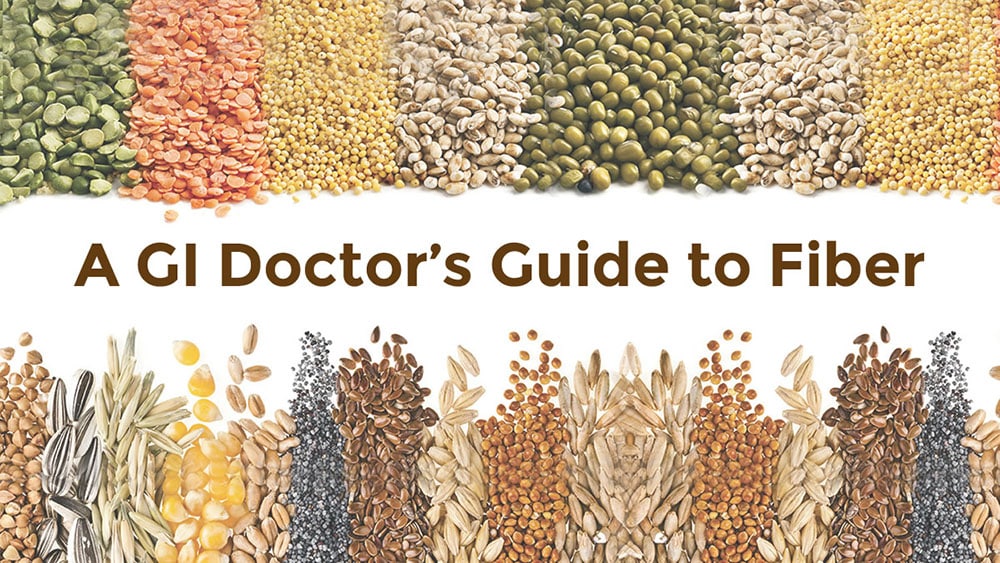As a gastroenterologist, I get a lot of questions from my San Antonio, TX patients about fiber intake. We all know it’s the right thing to do but most of us don’t take enough. So what is the right amount? What is the right type? Can I get it in my diet or do I have to buy a supplement? Let’s dive into some of these most common fiber questions.
What is dietary fiber?
Fiber is the plant material we eat in our diets and comes in two main forms- soluble and insoluble. Soluble fiber dissolves in water and is fermented in the colon. Insoluble fiber does not dissolve in water and acts as a bulking agent as they absorb water while passing through the digestive tract making our stool softer and easier to pass. Plants contain a combination of both types and are classified according to whether they provide predominantly soluble or insoluble fiber.
What is the advantage of taking fiber?
The main advantage of a high fiber diet is the production of healthy compounds during the fermentation of soluble and insoluble fibers ability to help bulk and soften our stool. Many of the problems associated with constipation like abdominal pain, hemorrhoids, anal fissures and diverticula of the colon can be minimized by a high fiber diet. There is also evidence that a diet high in fiber and low in fat can reduce the risk of colon polyps and colon cancer. There is also research showing a decreased risk of heart disease.
What is the disadvantage of taking fiber?
There aren’t many. The main problem with a high fiber diet is that the fiber ferments (gets chemically altered by the bacteria in our bowels) as it passes thru the digestive tract and makes gas. Sometimes a lot of gas. This is usually the limiting factor as to how much fiber a person can take. If you suffer from gas and bloating already, a high fiber diet may not be well tolerated. One of the goals with starting a high fiber diet is to gradually increase the amount of fiber in your diet over days to weeks. This gives the bacterial flora in your bowels time to adjust and many times leads to less overall gas production.
What does fiber do?

What is the best way to get fiber?
Fiber can be obtained from eating foods rich in fiber or by taking a supplement. Our goal is to get about 25-30gm of fiber PLUS 6-8 full glasses of water a day. The USDA estimates that the typical American eats only about 50% of the amount of fiber we should in a day. I always encourage my patients to try and get their fiber by eating high fiber foods not just thru supplements. My main rational for this is by changing one’s diet to foods high in fiber you will hopefully eat less foods that are high in fat. The overall health benefits of a high fiber diet come from both the fruits and vegetables you eat and from the fatty sugary foods you leave behind. There are many good charts out there of the fiber contents of certain foods such as the one I’ve included – find one that works for you, print it out, and start changing your diet.
If an overall diet change to high fiber foods doesn’t fit your lifestyle or if you already eat healthy but fall short of you fiber goal then there are plenty of supplements out there. The most common are Konsyl, Metamucil, Benefiber and Citrucel. They come as powders, capsules and wafers. The main goal here is to find one you like that fits your lifestyle. If you don’t like how they taste your less likely to take them consistently. I have tried them all and I use a combination of a high fiber low fat diet and a dose of Konsyl at bedtime.
The main take home point is to slowly increase your overall fiber intake by either taking foods high in fiber or adding a supplement (or both). Don’t stress too much about the right types of fiber or how much of one or the other. Just start making some healthy diet and lifestyle changes and see what happens. A healthy lifestyle should be fun, not stressful. I hope this has been helpful. Thank you.






